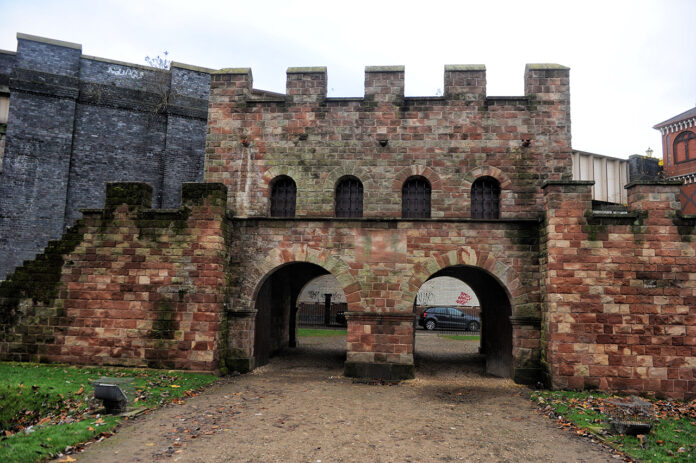Hidden beneath the bustling streets and modern buildings of Manchester, lies a remarkable piece of history – Mamucium. Often referred to as “Mancunium,” this ancient Roman fort represents the city’s rich and multifaceted heritage. In this article, we’ll embark on a journey back in time to explore the captivating story of Mamucium and its role in shaping the history of Manchester.
The Roman Footprints
Mamucium, believed to have been established around AD 79, was a crucial Roman fort located in the region now known as Manchester. Its strategic location near the confluence of the rivers Medlock and Irwell made it an ideal site for controlling trade routes and serving as a key military installation within the Roman province of Britannia.
The fort was constructed in a typical Roman fashion, featuring defensive walls, ditches, and a gatehouse. Mamucium served as a supply depot for the Roman fort of Deva Victrix (modern-day Chester) and played a significant role in maintaining Roman control in the region.
Mamucium’s Prosperity
Over the centuries, Mamucium evolved into a thriving settlement. Its strategic location ensured its growth as a centre for trade, commerce, and even local governance. Evidence suggests that the fort was equipped with granaries, barracks, and bathhouses, indicating a substantial and prosperous community.
The Transition to Manchester
As the Roman Empire declined, so did the importance of Mamucium. With the withdrawal of Roman forces from Britain in the early 5th century, the fort’s significance waned. However, the legacy of Mamucium persisted as the area continued to be inhabited.
The modern name “Manchester” is believed to have derived from “Mamucium,” a testament to the enduring influence of this ancient Roman settlement. The transition from Mamucium to Manchester marked the beginning of a new chapter in the city’s history.
Rediscovering Mamucium
For centuries, the existence of Mamucium was mostly forgotten, buried beneath layers of urban development. However, in the 20th century, during excavations in the Castlefield area of Manchester, archaeologists unearthed the remains of the Roman fort.
Today, these archaeological discoveries are preserved and celebrated in the Museum of Science and Industry (MOSI) in Manchester. Visitors can explore the reconstructed ruins of Mamucium, offering a tangible connection to the city’s ancient past.
Mamucium, the ancient Roman fort that once guarded the crossroads of Britannia, stands as a testament to Manchester’s rich and diverse history. Its story is a vivid reminder that beneath the modern facade of this bustling city lies a tapestry of historical layers, each contributing to the unique character and heritage of Manchester.
The rediscovery and preservation of Mamucium allow us to delve into the mysteries of the past, connecting the vibrant present with the intriguing history of this remarkable city. As we walk the streets of Manchester today, we can’t help but acknowledge the Roman footprints left by Mamucium, reminding us of the enduring legacy of this ancient settlement.

